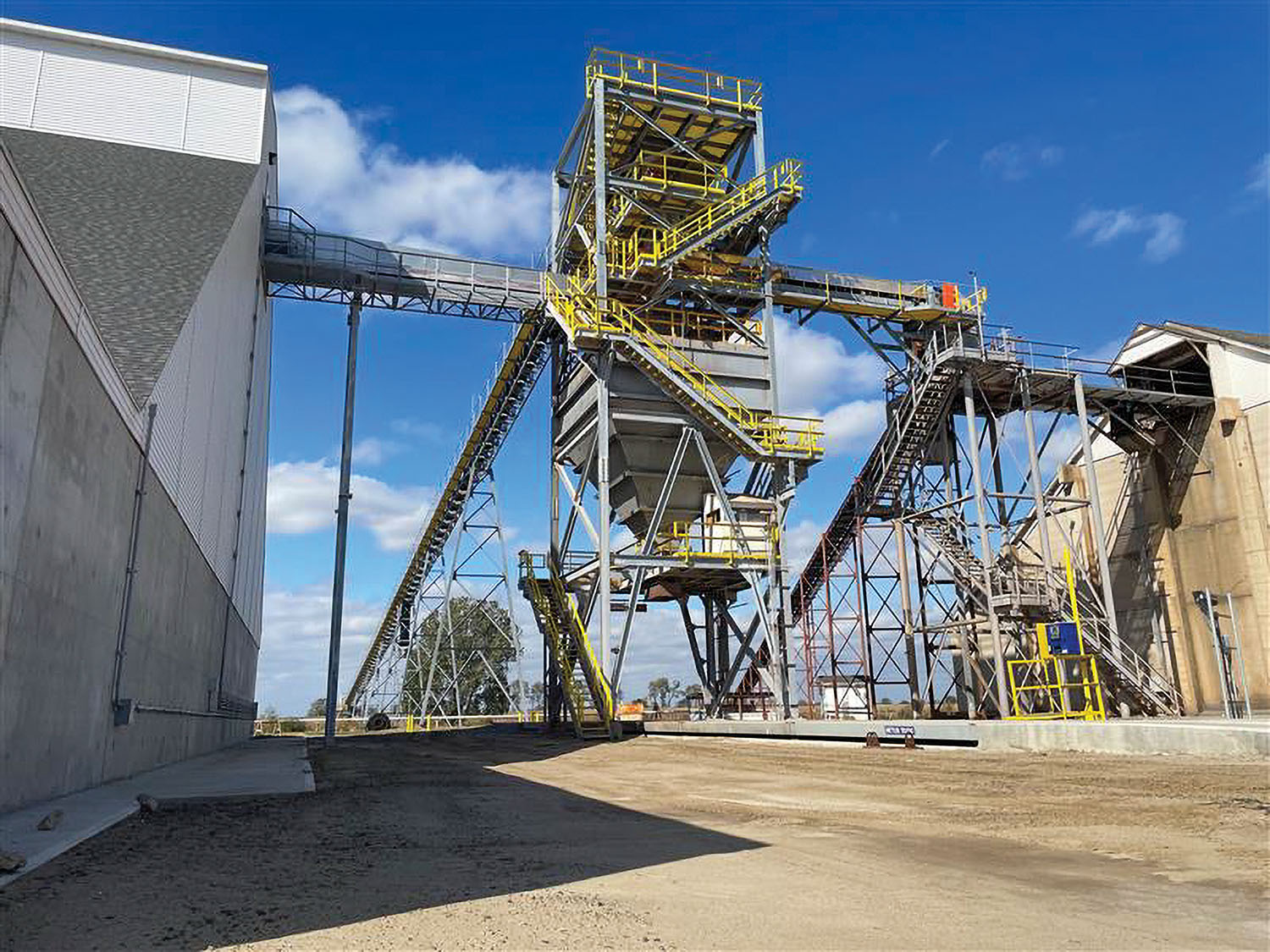The November 8 ribbon-cutting and open house on Helm Fertilizer’s expanded barge terminal at Helena, Ark., was a long time coming. The expansion more than doubles the length of its dock and the capacity of the terminal with added ability to offload and store fertilizer. Originally opened in 1995, Helm’s Helena Harbor facility serves a roughly 100-mile-radius area. The facility supplies all the major farm retailers in its region with urea and other fertilizer.
Since Helm bought the property in 2018, it has made significant improvements in capacity and ability to handle truckloads. It added a material handler and went from handling 60-80 truckloads per day to handling up to 120 per day by 2020. On one record day in 2021, the terminal handled 196 trucks.
The facility, however, was operating at maximum capacity. Despite trade wars and geopolitical shocks that affected fertilizer supply, demand for its products remained strong, and the terminal was picking up new business, gaining new customers.
For this, CEO and president Scott Shirk of Helm Fertilizer Terminal is quick to credit the facility’s “fantastic” sales team. “They brought in the tons, day in and day out,” he said. “The growth at our Helena terminal has been driven both by organic growth and inorganic growth from our sales team’s tireless efforts, and our terminal operator’s hard work, especially during our busy season.”
While it’s a good problem to have, “We were not keeping up with the demand,” Shirk said. By maximizing use of its one dock, the terminal was able to “de-bottleneck” to some extent, he said, and acquired a second work barge.
With support from the Port of Helena and a state grant approved by Gov. Sarah Huckabee Sanders, the terminal added a second warehouse. Additional grants for road-paving and upgrading IT infrastructure have also helped. “We were operating on DSN connectivity until two years ago—that’s one step up from dial-up,” Shirk said.
An additional 36-inch high-speed conveyor belt was added; it was fabricated in Houston and brought in by truck in sections, due to the low water that precluded using barges. That was part of Phase I, which was completed in 2022.
With the upgraded IT infrastructure, the terminal was able to install a 125-ton surge hopper that is able to generate a complete bill of lading while the truck is on the scale. It can now handle up to 400 tons of urea an hour, or three barges a day. “Even in a challenging market, business has been good,” Shirk said. “Throughout 2023, we did not ‘zero out’ on any product—we kept up availability.”
Just as important as the IT infrastructure was the paving of a dirt access road, which the county finished this fall. “We couldn’t have it paved during the busy season,” which typically extends from February through July, Shirk said. The blacktop road, which includes a staging lane, was finished and striped in September.
“Rail is the next step of our expansion,” he said. The terminal wants to add a rail spur to increase outbound volume and supplement barges.
Step by step, the facility has been improving its ability to serve the farmers of its service area. While Helm can’t control outside factors that affect fertilizer prices, like geopolitics, trade wars and river levels, it can and does ensure that whatever improved logistics can do to keep prices affordable for its farm customers will be done.
All this has been possible, Shirk said, because “we have a vision.”
Caption for photo: Helm Fertilizer formally opened an expansion of its Helena, Ark., terminal on November 8. (Photo courtesy of Helm Fertilizer)




